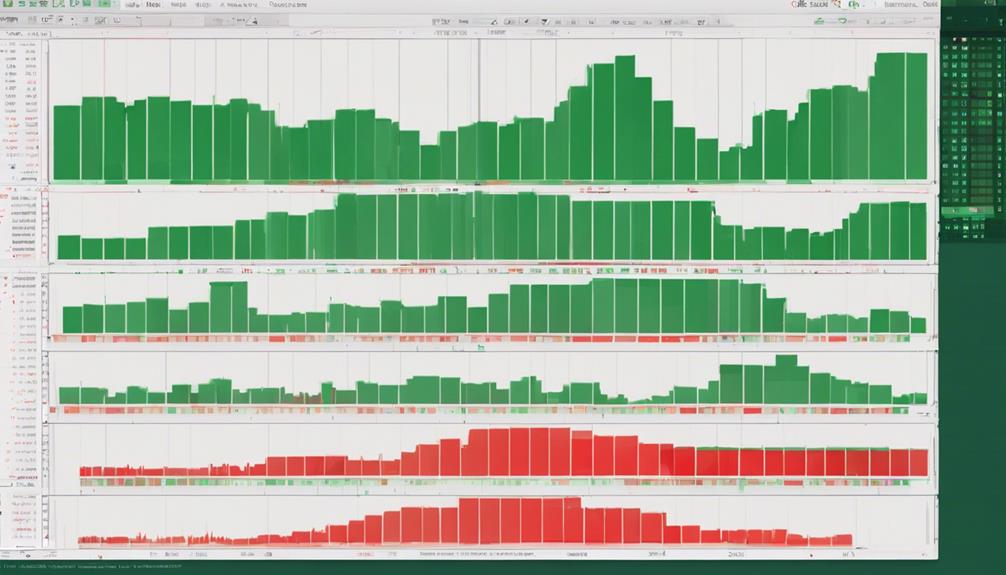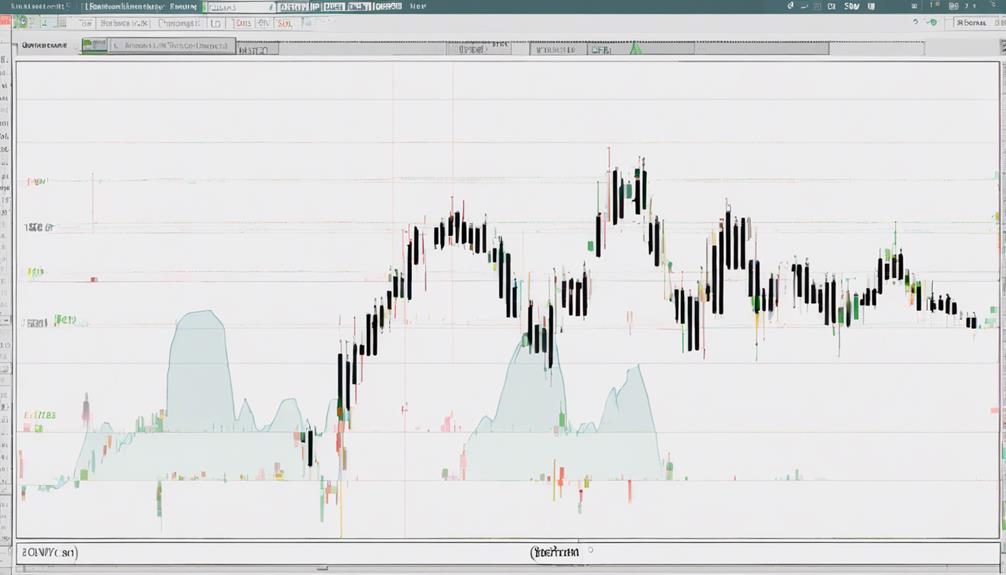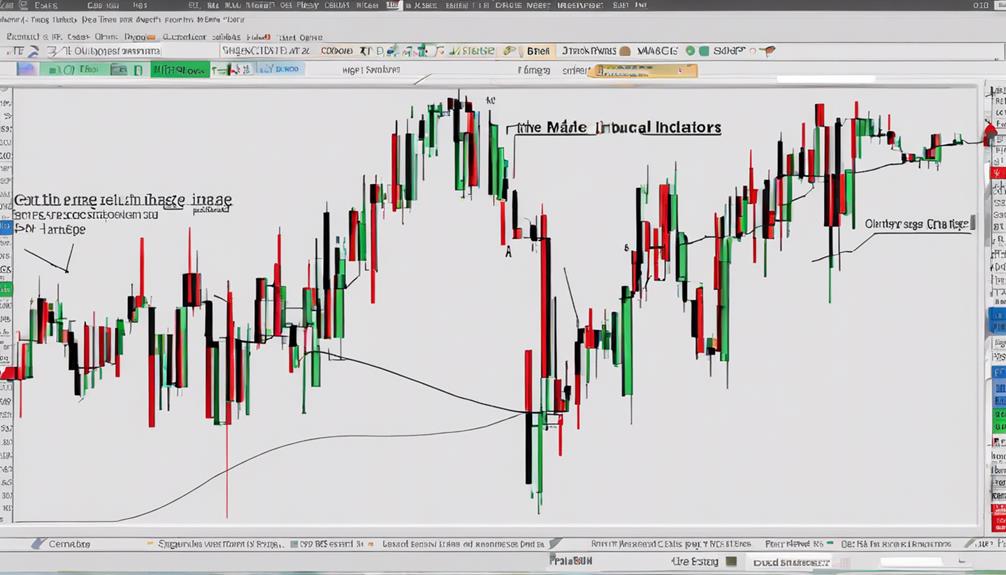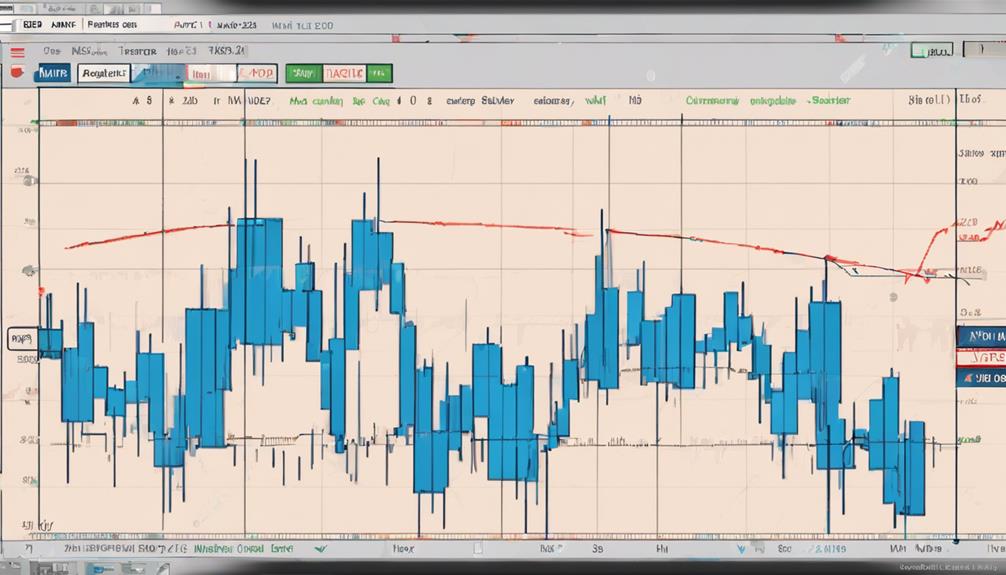When you observe the MACD indicator and notice a bullish crossover where the MACD line crosses above the signal line, prompting you to consider a potential buying opportunity, it's crucial to understand the nuances of other signals that the MACD can provide.
These additional signals can offer valuable insights into market trends and potential entry or exit points, helping you make more informed trading decisions. Understanding these signals can significantly enhance your ability to navigate the complexities of the financial markets and improve your trading strategies.
MACD Signal Line
The MACD signal line, derived as a 9-day EMA of the MACD line, serves as a smoothed indicator crucial for discerning trading signals.
When the MACD line crosses above the signal line, it triggers a bullish signal, suggesting a potential uptrend in the market.
Conversely, if the MACD line crosses below the signal line, it generates a bearish signal, indicating a possible downtrend.
These crosses between the MACD line and the signal line are essential for identifying trend changes and signaling potential entry or exit points for trades.
Monitoring these crossovers is fundamental in MACD analysis to interpret buy or sell signals accurately and effectively navigate market trends.
MACD Histogram Signals

Analyzing MACD histogram signals offers traders a visual depiction of the variance between the MACD line and its signal line. Histogram bars above the zero line indicate bullish momentum, while bars below suggest bearish momentum.
The length and direction of these bars reflect the strength and direction of price movements, aiding in identifying potential trend changes. Traders observe convergence and divergence between the histogram bars and the zero line to make informed trading decisions.
MACD Crossover Signals

When observing MACD crossover signals, traders look for instances where the MACD line crosses the signal line to confirm potential market trend changes.
A bullish crossover, where the MACD line moves above the signal line, suggests a potential buy signal. Conversely, a bearish crossover, occurring when the MACD line shifts below the signal line, indicates a potential sell opportunity.
These crossovers play a vital role in helping traders confirm trend changes and make entry or exit decisions based on market momentum. By paying close attention to the MACD line crosses with the signal line, traders can gain valuable insights into possible shifts in price direction and adjust their strategies accordingly.
MACD Divergence Signals

To further analyze market trends, examine MACD Divergence Signals, which indicate discrepancies between price movements and MACD indicators.
Bullish divergence is identified when the price forms a lower low while the MACD forms a higher low. On the other hand, bearish divergence occurs when the price establishes a higher high, and the MACD creates a lower high.
These divergence signals in the MACD can suggest potential trend reversals or shifts in momentum. Traders utilize MACD divergence signals to anticipate possible changes in price direction for making informed trading decisions.
MACD Zero-Line Cross Signals

A MACD zero-line cross signal indicates a significant shift in market sentiment based on the crossing of the MACD line above or below the zero line on the chart.
When the MACD line crosses above the zero line, it's seen as a bullish signal, suggesting potential upward momentum.
Conversely, crossing below the zero line is considered a bearish signal, indicating potential downward movement.
Traders often rely on MACD zero-line cross signals to confirm trend changes and make informed buy or sell decisions.
These signals help traders identify trading opportunities by analyzing market sentiment.
Understanding the MACD zero-line cross can provide valuable insights for traders seeking to capitalize on potential market movements and confirm prevailing trends.
Can You Explain the Signals in a MACD Indicator?
The MACD indicator is a popular tool for traders. It consists of two lines – the MACD line and the signal line. When the MACD line crosses above the signal line, it’s a bullish signal. Conversely, when the MACD line crosses below the signal line, it’s a bearish signal. Here are some practical MACD indicator tips to help you interpret these signals effectively.
Frequently Asked Questions
What Are the Signals on Macd?
When trading with MACD, you'll watch for the MACD line crossing the signal line. A bullish signal happens when MACD surpasses the signal line upwards, while a bearish one occurs when it crosses below.
What Are the 3 Components of MACD Indicator?
When trading, you should understand the three components of the MACD indicator: MACD line, signal line, and MACD histogram. They reveal trends and reversals in the market. By grasping these elements, you can make informed decisions.
What Are the 3 Numbers in Macd?
In a MACD indicator, the 3 numbers – 12, 26, and 9 – signify the fast EMA, slow EMA, and signal line respectively. Customize these parameters for your specific trading needs and timeframes.
What Are the Signal Line Settings for Macd?
To set up the signal line on MACD, use the default 9-day EMA. This line assists in spotting buy or sell signals by crossing with the MACD line. Look for these crossovers as potential trading opportunities.
Conclusion
Just as a skilled conductor leads an orchestra with precise signals, the MACD indicator guides traders in navigating the complex symphony of the market.
The MACD signal line orchestrates buy and sell decisions, while the histogram, crossovers, and divergences provide harmonious insights into price movements.
Like a compass pointing the way through choppy waters, the MACD zero-line cross signals offer clarity in uncertain market conditions.
Master the signals, and you'll conduct your trades with confidence and precision.
